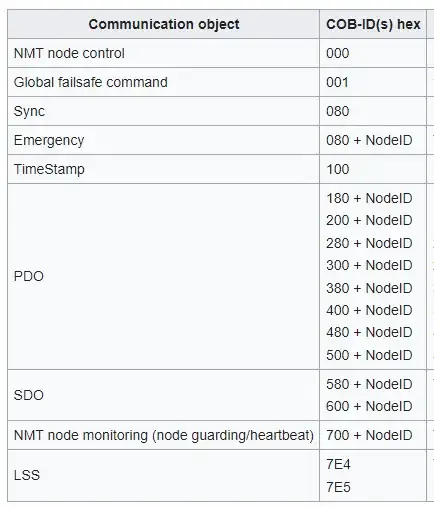I'm planning a CANopen network with a few nodes (8-9) so I'm thinking of the Node-ID using 4 bits, and 7 for the rest of the COB-ID to indicate more than the 4 basic PDOs there seems to be (as up to 512 PDO are possible, apparently). from the below table (source: https://en.wikipedia.org/wiki/CANopen?msclkid=cc03ecf1cf8911ec8b496ce77ca22492#Predefined_Connection_Set[7])
I have the following questions:
- Can I have my PDOs at 180 + NodeID , 190 + NodeID , 1A0 + NodeID , etc. as NodeID is 4 bits?
- Do I have to have pairs of TPDO and RPDO or may I have an unequal number?
- Same with SDOs, can I have different Transmit and Receive number of them?
- Can I rearrange the Sync, Emgy, Timestamp and NMT COB-IDs to have more PDO/ SDO? Like Sync at 010, Timestamp at 020, NMT 030, etc. Or can I but better not, for whatever reason?
- As an alternative to the above, could I map PDOs/ SDOs to COB-IDs like 010 + NodeId, etc?
- What is LSS?
